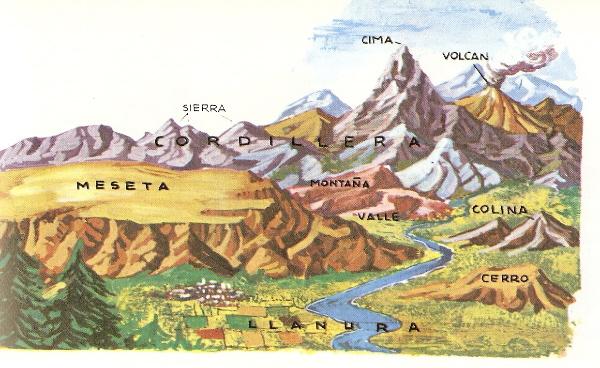
The lithosphere |
1. The relief
it is the form that the surface of the earth's crust has.
The earth's crust has not always had the actual form. Some current plains were under the sea many years ago.

2. Relief forms
The main forms are: mountains, plateaus, plains and depressions.
- Mountain is a great land elevation. The highest part of the mountain is called summit and its inclination is called slope.
When the mountains are aligned, they form a mountain chain. For example: the Andes.
There are young and old mountains. The first ones are usually high and are distinguished by their acute forms, their large peaks and steep slopes. For example: The Pyrenees.
The second ones are usually not very high and are distinguished by their erode forms because of the erosion. For example: the Galician Massif in Galicia, Spain.
- Plateaus are flat elevated regions. The Spanish Central Plateau has about 600 meters high. There are plateaus as high as the highest mountain. For example: the Tibet, called the “Roof of the World ", has more than 5 000 meters high.
The plateaus are usually old erode mountains.
- Plains are flat regions but its altitude does not exceed 200 meters above sea level. There are plains that occupy several million square kilometers. For example: the plains of central Europe and northern Asia.
The plains are usually dried depths of ancient seas.
- Basins are areas that are below sea level as a result of land subsidence. For example: "Death Valley" in California and “Dead Sea" in Palestine.
- The valleys are sunken areas.
3. Choose one of these words and answer: mountain, plateau, plain or basin